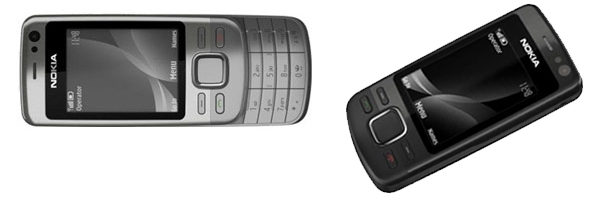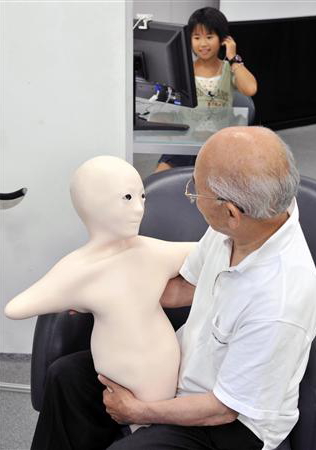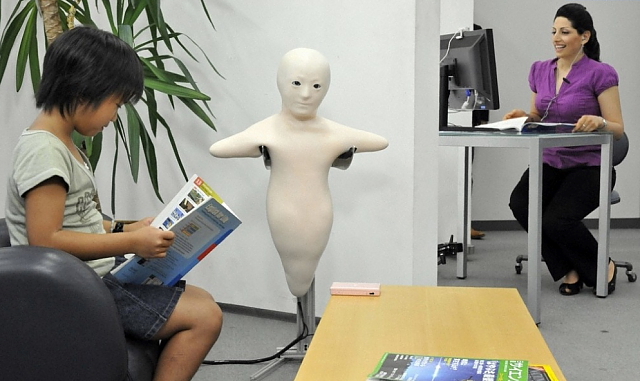Staying up to date with everything that's going on in PCs and tech is almost impossible, so these are the ten technologies that you should be most aware of, as they're the ones that'll make the biggest difference to your life.
1. 3D gaming
The fact that to get any kind of 3D image from a 2D screen means wearing a pair of sunglasses or worse means that three dimensional gaming isn't quite as convincing as multitouch and natural user interfaces, even though the two have been commoditised at almost the same time.
An Acer Aspire 5738 laptop with a 3D display costs about £550 at the moment, not bad for something with cutting edge technology that adds depth to any DirectX 9 game. The screen is of the polarised filter type, which is the new norm for extra dimensions.
Instead of using coloured filters splitting an image into two – one for each eye – the vertical pixel columns are alternated between left image and right image and shone through a piece of polarised glass. A pair of dark glasses with oppositely polarised lenses ensures that only one image is seen by each eye. The difference to a game is tangible too, something like WoW runs and looks incredible on the low-end graphics hardware.
It's over in TV land that the real push for 3D is happening, though, as LCD suppliers ask us to upgrade again to watch hyper-real cinema in the lounge. Compared to the other technologies we've talked about here, though, 3D requires a lot of effort on behalf of the watcher (those pesky glasses) and most of us are very lazy; hence the ubiquity of MP3 and standard definition movies, while Blu-ray and higher resolution sound standards continue to flounder. We value ease of use over quality every time.
In its favour, 3D doesn't actually require any work on behalf of games developers or publishers, as the stereoscopic image is created at the driver level. On the other hand, that means there's no massive push by the people who make and sell games to encourage us to adopt it.
2. Streaming games
The advancements in superfast broadband hasn't just helped the cause of downloadable games. It will also have no some small impact on the future of streaming games over broadband, or at least that's the theory.
There are several companies pursuing and a significant amount of money invested in the idea that one day, your precious PC will be almost entirely redundant as a games machine.
The concept is simple: all the game's data is hosted on a central server and all you will have to do is receive the display and send back input commands. It's a little like the technology used for MMORPGs, except that the rendering engine isn't on your PC, it's actually in the same server farm as the core intelligence.
This idea was actually mooted some years ago with the Phantom console, which never made it to the stores. It's looking unlikely that OnLive (www. onlive.com), Gaikai and Microsoft's own streaming project will end up as vapourware though, despite the obvious concerns about input lag: the delay that occurs every time you press a key. The signal has to travel hundreds of miles before a character even moves.
Proponents say that even twitch gaming FPS games are possible but we're a little more sceptical. There's another reason that at least one of these services will be properly launched soon, and that's vested interest by games publishers.
Because no content is stored on your machine, of course, it's impossible to pirate a streamed game, which is obviously an attractive proposition for them. In the immediate future, though, it is more likely to be a technology that runs like games such as Quake Live, which use a combination of some local processing power and some server-based cycles. That's certainly the route Microsoft is taking, and seems more achievable than relying on 'the cloud' at this stage.
3. Six-core processors
You won't have to wait long for this one. Intel's Westmere CPUs may be hanging around with the dregs of processor society at the moment, chucking their chips in with the integrated graphics crowd, but they're about to grow up – and fast.
Sometime over the next few months Intel will go two better than the current line up of quad-core CPUs by launching a six-core version of its high-end Core i7 line. Based on the existing Nehalem architecture, the headline feature is a process shrink down to 32nm, while the rest of the spec sheet remains largely the same. It could be a genuine upgrade.
Games programmers are getting much better at working with multithreaded code so that most major titles, like Empire: Total War and its forthcoming sequel Napoleon, will see a much bigger performance increase when given extra cores to play around in than the often sporadic leaps in frame rate we saw going from two to four cores.
Because the benefits will be in the amount of cores, rather than the speed of things you can do at once, Intel are encouraging some developers to add extra content specifically for people with a six-core CPU. Given the plethora of disappointments we've had lately with almost every technology that's promised to increase our frame rates, we'll reserve judgement until we have one in the office.
The good news is that these hexa-powered processors will fit into most existing X58 motherboards after a simple BIOS flash. The bad news is X58 motherboards are still very expensive too.
4. Wireless power
A few years ago we saw a demonstration by a team at Fulton Innovation of a product called eCoupled. Using the principle of electromagnetic induction, by which an electrical charge can be stimulated in a wire coil by placing another one nearby, the crazy boffins were able to display wireless power transfer.
Despite being high voltage, they said, it was safe, efficient and could be applied to any surface. The demo room consisted of a kitchen without plugs, but full of lights that could be stuck anywhere and a frying pan that heated up just by sitting it on the counter. Put a phone on the same counter and it began charging. Clearly, this was the future.
Fulton are still working on wireless power, but it's a different company that's beat it to the shops, Powermat – and its products are expensive for something that replaces a 50p mains plug.
The good news is that the Wireless Power Consortium are going to be finalising a standard for wireless power called Qi later this year, which should mean prices drop and manufacturers have the confidence to build the technology straight into devices, rather than requiring an adaptor.
If you think that's crazy, though, take a look at Airnergy by RCA. It's a tiny dongle that can turn Wi-Fi signals back into electricity for charging phone batteries and the like.
5. Wireless displays
The last two standards for monitors, HDMI and DisplayPort, didn't exactly have us all rushing out to upgrade our PC screens and graphics cards, so it's a safe bet that DVI will remain the cabled interface of choice for some time to come. What about connecting a monitor to your PC without wires though?
That's something that could be worth shelling out for. Two different technologies were on the show floor at CES, which should be available en masse this year.
The first, WirelessHD is being pushed by the usual line-up of TV and DVD player manufacturers as a replacement for HDMI. It uses a short range, high bandwidth in the Ultra-Wide Band (UWB) spectrum to transmit HD video and audio from a set-top box or media centre to a TV screen.
The idea is nothing new, Philips have had a kit out for a while that does the same thing, but WirelessHD is a proper standard and should ensure maker A's TV works nicely with maker B's Blu-ray machine and so on.
Perhaps more relevant for us, though, is Intel's new Wireless Display, or WiDi. It's designed specifically for laptops in order to remove the hassle of cables when you want to dock them with a proper screen, and like WirelessHD sends the video signal to a receiver box.
Unlike WirelessHD, WiDi can't handle protected content and the like, but it is much simpler since it requires no new hardware inside the laptop. Instead of using a separate transmitter, WiDi is a software layer on top of the existing Wi-Fi chip, so it's much cheaper to produce. Providing there's no latency introduced to the picture refresh rate, this could be a killer.
6. OLED displays
Yeah, we hear you. Another year, another promise that OLED screens are going to take over. Haven't we heard it all before? Except this time it could be true.
Google's Nexus phone has just launched with an OLED screen, and by all accounts it makes the handset almost – say it in hushed tones – more desirable than the iPhone. Brighter colours, sharper resolutions, darker blacks, whiter whites; why is this OLED technology so superior?
Put simply, it's because instead of filtering the light from a white or blue lamp behind the screen, each pixel in an OLED panel produces its own light. You don't have to be an optometrist to see why this is better, but it is much more expensive to produce.
Still, it also means OLED screens are much thinner than backlit ones, for obvious reasons, and while you may not be using an OLED PC monitor by the end of the year there are a lot more laptops with the technology arriving.
7. Superfast broadband
There are two things about broadband you should be concerned about. The first is whether or not the Digital Britain report, with its three strikes policy, outrageous invasion of privacy and extra charging for bandwidth, makes it into law before the general election final hits.
The second is what's going on at your exchange. By early next year, 75 per cent of us should be living in proximity to a telephone exchange that has a fibre optic connection to the internet. It's all part of BT's 21CN project to replace the entire copper telephone and broadband internet infrastructure with a single ethernet-based network fit for the 21st century.
So far, it's been dogged by delays and problems, but it's finally picking up the pace and is being tested by ISPs all over the country. The idea is that it will increase competition for high-speed broadband and bring down access prices, as well as bring services like IPTV – of the sort Virgin customers enjoy – to everyone.
It doesn't just mean better access to large downloadable game files and lower ping times, however. Our biggest hope is that it will eventually encourage telephone companies to do away with the irritating £12 a month line rental charge for a phone we don't actually use.
8. Augmented reality
Actually, we're kidding ourselves with this one. Augmented reality: the ability to overlay information on a live video feed of the world, is very cool, and it's impossible not to love iPhone apps like Yelp that pull in details and distances to the nearest pub or restaurants as you point the camera in their general direction.
Holding your phone three inches in front of your face as you're walking around feels a little too ridiculous to catch on, though. Perhaps it's like handsfree and Bluetooth headsets. Not so long ago people still sniggered if they saw someone using a phone without holding it to their ear, and not so long before that mobile phones themselves were devices for sales dorks.
In a couple of years time, it may seem the most natural thing in the world to see someone walking around with a phone held at arms length, directing them to food or drink with their own personal dynamic GPS system, or pulling up interesting information about the buildings and people in front of them. Yes, that's right, people.
Twitter 360 is an iPhone app that directs you to geotagged tweeters on your friends list, while TAT (www.tat.se) is working on an Augmented ID program, so if people point a camera at you various bits of information from your social feeds floating around your head. Makes stalking a lot easier then. Scary. 9. Natural user interface
In his CES keynote presentation, Steve Ballmer made several references to the 'Natural User Interface' (NUI), which is a handy catch all to describe all the Wii wand-waving, multitouch point and Project Natal-style aerobics that are catching headlines out there.
The keyboard and mouse is by no means dead, but the sudden flood of cheap laptops and all-in-ones with a built-in, multitouch screen suggests that it won't be long before we'll all have something a little bit different on our desktops.
Over in the US, for example, custom laptop maker IBuyPower has already started selling high-end gaming notebooks with a multitouch screen, and French developer, Eugen Systems has incorporated Win7's multitouch controls into the heart of its forthcoming strategy title R.U.S.E. It's all very exciting, except for one thing.
Multitouch may be native to Win7 and no other operating system, but the implementation is nowhere near as smooth as it is on, say, the iPhone. PCFormat has yet to use a multitouch application on a PC that doesn't suffer from a bit of inaccuracy or sluggishness, and the key to the NUI is in the first word. It has to feel natural, unforced and invisible to the end user. That's what using multitouch on an iPhone is like, and that's what Windows must achieve. If the mouse remains faster and more trusted, that's what people will use.
There are some brilliant ideas out there, though. Project Natal, Microsoft's full body 3D gesture recognition system for Xbox 360, is by far the most ambitious prototype, and we can't wait for a PC hack.
At CES the prototype Light Touch projector, from Light Blue Optics (lightblueoptics.com), was a show stealer. Using a technique called holographic laser projection, this tiny projector turns any 10inch surface – flat or curved - into a sharp multitouch screen.
10. Long-term evolution
The idea of getting high speed, super-reliable mobile broadband from a cell tower to your laptop or phone via WiMAX is not quite dead in the water, but it's certainly in need of a bit of mouth to mouth.
Far from being the 'Next Big Thing' as it was touted a few years back, it's had a painful and traumatic incubation period, which has seen some US carriers begin to adopt it and, in fact, quite a few businesses use it for point to point communications, but public access has dwindled from trial areas to almost nothing.
Partly, this may be because the company which owns the licence to operate WiMAX licences in several cities, Freedom4, was recently bought out and the new owners aren't in any rush to monetise the technology. More likely, it's because the mobile phone companies are happy with the current HSPDA speeds and are betting on an alternative technology, which is known as 4G, or Long Term Evolution (LTE) to supply almost the same amount of bandwidth without completely reworking their networks for WiMAX.
Lucky Scandinavians living in Stockholm or Oslo with a TeliaSonera contract can already sign up for LTE, while O2 is planning on launching a 150Mbps LTE package in the UK some time this year. We don't expect WiMAX to give up without a serious fight, though.
In the US, mobile networks are beginning to fall over because of the volume of 3G traffic running over them, and WiMAX's new architecture could well be a way to increase capacity to cope with demand. In which case, expect to see it begin sprouting up everywhere.
Faster bits and bytes
Rather more prosaic than the technologies listed elsewhere in this article the internals of your PC are also being overhauled by the powers that be. There's a revision to the SATA standard out for disk drives, and USB 3.0 is appearing on motherboards to speed up the default peripheral connection.
They are big steps forward. SATA III doubles the bandwidth available to storage from a theoretical 3Gbps to 6Gbps, while on paper USB 3.0 is a ten-fold increase from 480Mbps to 4.8Gbps for cabled peripherals.
 Motherboards sporting ports of both flavours are already available from most manufacturers. Although both technologies are much faster than their predecessors, neither is likely to have a huge impact on consumer PCs.
Motherboards sporting ports of both flavours are already available from most manufacturers. Although both technologies are much faster than their predecessors, neither is likely to have a huge impact on consumer PCs.In the world of business where milliseconds are money, the upgrades may mean something, but for the likes of us, compatible drives and peripherals will be a while coming yet.









 Data is transmitted between the user and robot via Internet connection
Data is transmitted between the user and robot via Internet connection Telenoid R1 with Dr. Hiroshi Ishiguro (Osaka University)
Telenoid R1 with Dr. Hiroshi Ishiguro (Osaka University) English lessons can be conducted via the Telenoid R1 robot
English lessons can be conducted via the Telenoid R1 robot A December 2007 artist's conception of the James Webb Space Telescope.Credit: NASA › Larger imageIt takes years to bring a real large space telescope from basic concept to hardware reality. First, a scientist comes up with an idea to study some aspect of the Earth or the cosmos. The idea is discussed, reviewed and developed by committees of scientists. It is proposed to NASA, who makes decisions on what missions to go forth on, and which missions to pass on. If a mission is selected for study a timeline is created to develop the mission.
A December 2007 artist's conception of the James Webb Space Telescope.Credit: NASA › Larger imageIt takes years to bring a real large space telescope from basic concept to hardware reality. First, a scientist comes up with an idea to study some aspect of the Earth or the cosmos. The idea is discussed, reviewed and developed by committees of scientists. It is proposed to NASA, who makes decisions on what missions to go forth on, and which missions to pass on. If a mission is selected for study a timeline is created to develop the mission. The life-sized James Webb Space Telescope model sits in front of the Royal Hospital Kilmainham, in Dublin, Ireland.Credit: Richard Bent, Northrop Grumman Space Technology › Larger imageEngineering test units, or ETUs are created before an actual instrument is built, so that engineers and scientists can make sure it would work properly. ETUs are a replica of the flight unit that can perform certain flight functions for testing purposes. ETUs are also used when engineers are practicing installation of an instrument into a satellite's mainframe or "bus." The outcome of the tests on ETUs may lead to a change in handling procedures of the actual flight instrument, but not a change in its flight construction.
The life-sized James Webb Space Telescope model sits in front of the Royal Hospital Kilmainham, in Dublin, Ireland.Credit: Richard Bent, Northrop Grumman Space Technology › Larger imageEngineering test units, or ETUs are created before an actual instrument is built, so that engineers and scientists can make sure it would work properly. ETUs are a replica of the flight unit that can perform certain flight functions for testing purposes. ETUs are also used when engineers are practicing installation of an instrument into a satellite's mainframe or "bus." The outcome of the tests on ETUs may lead to a change in handling procedures of the actual flight instrument, but not a change in its flight construction. This panorama shows the inside of Goddard's High Bay Clean Room, as seen from the observation deck. The clean room will be a home to some Webb components before the telescope is put together. Credit: NASA/Chris Gunn › Larger image
This panorama shows the inside of Goddard's High Bay Clean Room, as seen from the observation deck. The clean room will be a home to some Webb components before the telescope is put together. Credit: NASA/Chris Gunn › Larger image 
 Motherboards sporting ports of both flavours are already available from most manufacturers. Although both technologies are much faster than their predecessors, neither is likely to have a huge impact on consumer PCs.
Motherboards sporting ports of both flavours are already available from most manufacturers. Although both technologies are much faster than their predecessors, neither is likely to have a huge impact on consumer PCs.